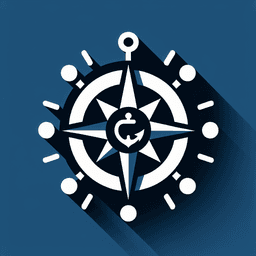
Port Waypoint: Definition and Examples
February 27, 2025
Port Waypoint
A Port Waypoint is a crucial navigational reference used by sailors and maritime professionals to guide vessels safely through specific routes or to designated locations within a port. These waypoints are integral to modern navigation systems, providing precise coordinates that help in plotting a course and ensuring safe passage.
Waypoints are typically used in conjunction with GPS and electronic chart systems, allowing for real-time tracking and adjustments to a vessel's course. In the context of a port, waypoints are strategically placed to assist in avoiding hazards, managing traffic, and ensuring compliance with port regulations.
Key aspects of Port Waypoints include:
- Location Specificity: Each waypoint is defined by exact latitude and longitude coordinates, ensuring accuracy in navigation.
- Safety: By following designated waypoints, vessels can avoid obstacles such as shallow waters, reefs, and other navigational hazards.
- Efficiency: Waypoints help in optimizing routes, reducing travel time, and conserving fuel.
- Regulatory Compliance: Adhering to waypoint routes ensures that vessels comply with local maritime laws and port authority guidelines.
Port Waypoints are essential for the safe and efficient operation of maritime activities, particularly in busy or complex port environments. They are a fundamental component of modern maritime navigation, enhancing both safety and operational efficiency.
Understanding Port Waypoints in Maritime Navigation
A waypoint in maritime terms is a reference point in physical space used for navigation. It is typically defined by its latitude and longitude, serving as a crucial element in route planning for both maritime and aerial navigation. Waypoints are integral to creating a route or sail plan, marking intermediate points along a travel route.
What is a Waypoint in Shipping?
In the context of shipping, a waypoint is a geographical position defined by its precise latitude and longitude. It is used in electronic navigation systems to guide vessels along a predetermined path. This ensures that ships can navigate safely and efficiently from one port to another, avoiding obstacles and optimizing travel time.
What is a Marine Waypoint?
A marine waypoint is either an intended destination or an intermediate point that a vessel plans to pass through. These waypoints are used to create a route or sail plan, which is essential for safe and efficient navigation. By following a series of waypoints, mariners can ensure they are on the correct path and make necessary adjustments to their course as needed.
Examples of Waypoints
Waypoints can be associated with distinctive features of the real world, such as rock formations, springs, oases, mountains, buildings, roadways, waterways, and railways. In the maritime context, they are often used in conjunction with GPS technology to provide precise navigation data.
Utilizing Waypoints in Maritime Navigation
Waypoints are crucial for maritime navigation as they help mariners determine their current location and the best route to their destination. By marking waypoints along a route, mariners can ensure they are following the most efficient path, taking into account factors such as weather conditions, sea currents, and potential hazards.
In summary, waypoints are an essential tool in maritime navigation, providing a reliable method for plotting courses and ensuring safe passage across the seas.




